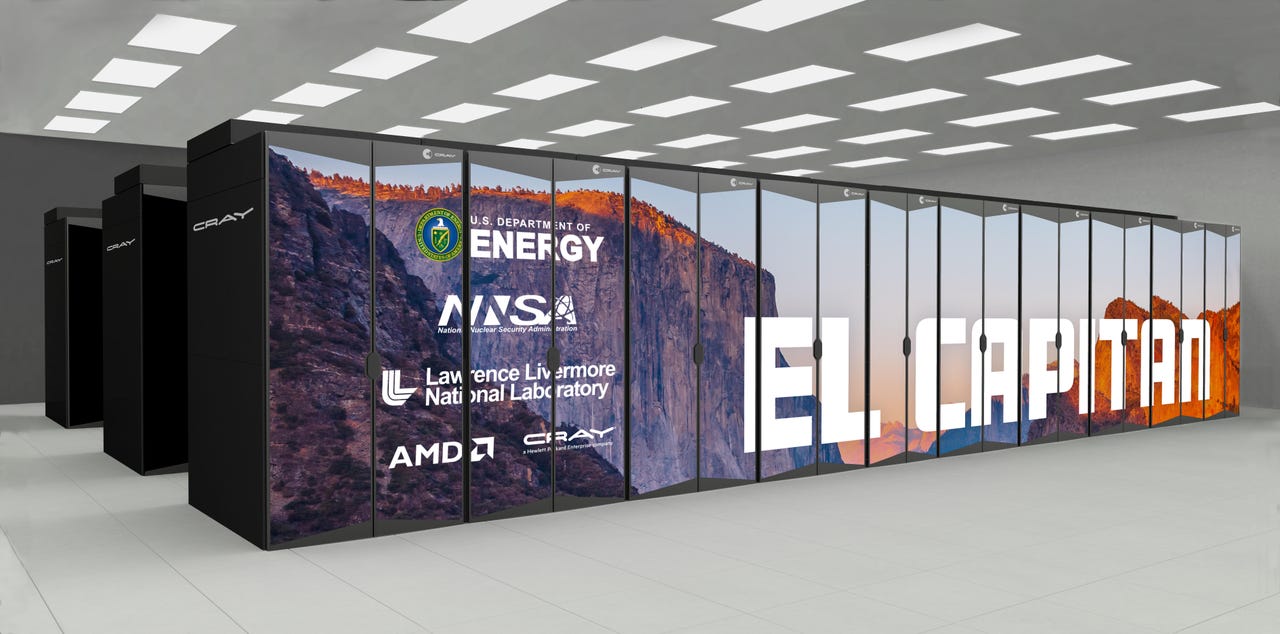HPE taps AMD GPUs and CPUs for the El Capitan supercomputer


HPE is partnering with AMD to deliver the US Department of Energy's El Capitan supercomputer, the companies announced Wednesday. Using AMD GPUs and CPUs, the system's performance will be greater than two exaflops, HPE now says. That's 10X faster than today's most powerful supercomputer and greater than the performance of the top 200 supercomputers combined.
El Capitan, expected to come online in 2023, will be used to protect the US nuclear stockpile. Supercomputer maker Cray announced back in August that it won the $600 million contract to build the El Capitan exascale system in partnership with the US Department of Energy (DOE), the National Nuclear Security Administration (NNSA) and Lawrence Livermore National Laboratory (LLNL). Just a few months earlier, HPE announced it was acquiring Cray for $1.3 billion.
The plans for El Capitan mark another milestone for AMD, which in recent months has touted its momentum in the high-performance computing market. The company recently made it back onto the Top500 list of the world's fastest supercomputers with a system from the French high-performance computing organization, GENCI. Meanwhile, AMD is working with HPE to deliver another exascale system for the DOE, the Frontier supercomputer, which is set to arrive at the lab in 2021.
HPE is also working with Intel to deliver the Aurora supercomputer to the DOE in 2021.
Unlike the Frontier, which will use custom CPUs, El Capitan will use standard Epyc CPUs from AMD. More specifically, it will use next-gen Epyc processors codenamed "Genoa," featuring the Zen 4 processor core. The system will also use next-generation AMD Radeon Instinct GPUs, based on a new compute-optimized architecture for workloads including HPC and AI. It's also using the third-generation AMD Infinity Architecture for a high-bandwidth, low latency connection between the CPUs and GPUs.
"The exciting thing about El Capitan is it allows us to showcase best of AMD GPU technology and CPU technology working together hand in hand," Forrest Norrod, AMD's SVP and GM of the datacenter and embedded solutions business group, said to reporters.
AMD is also providing unified memory across the GPU and CPU complex, he said, "which helps with one of the objectives... making this easy to use. Making the system accessible to programmers without explicitly handling memory management at a detailed level, we think, is critical to making codes portable and making... performance more accessible. We believe this is a significant advance in the architecture and key to unolocking usable performance in El Capitan."